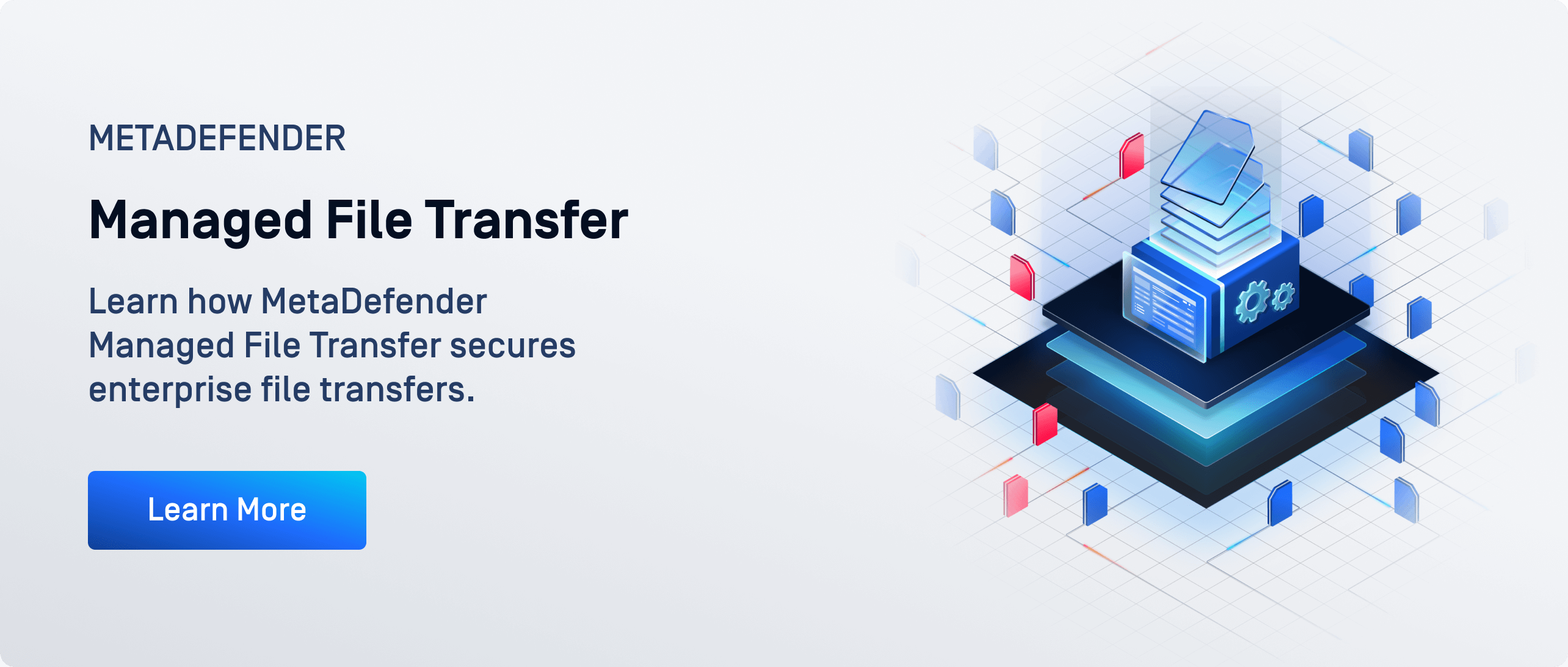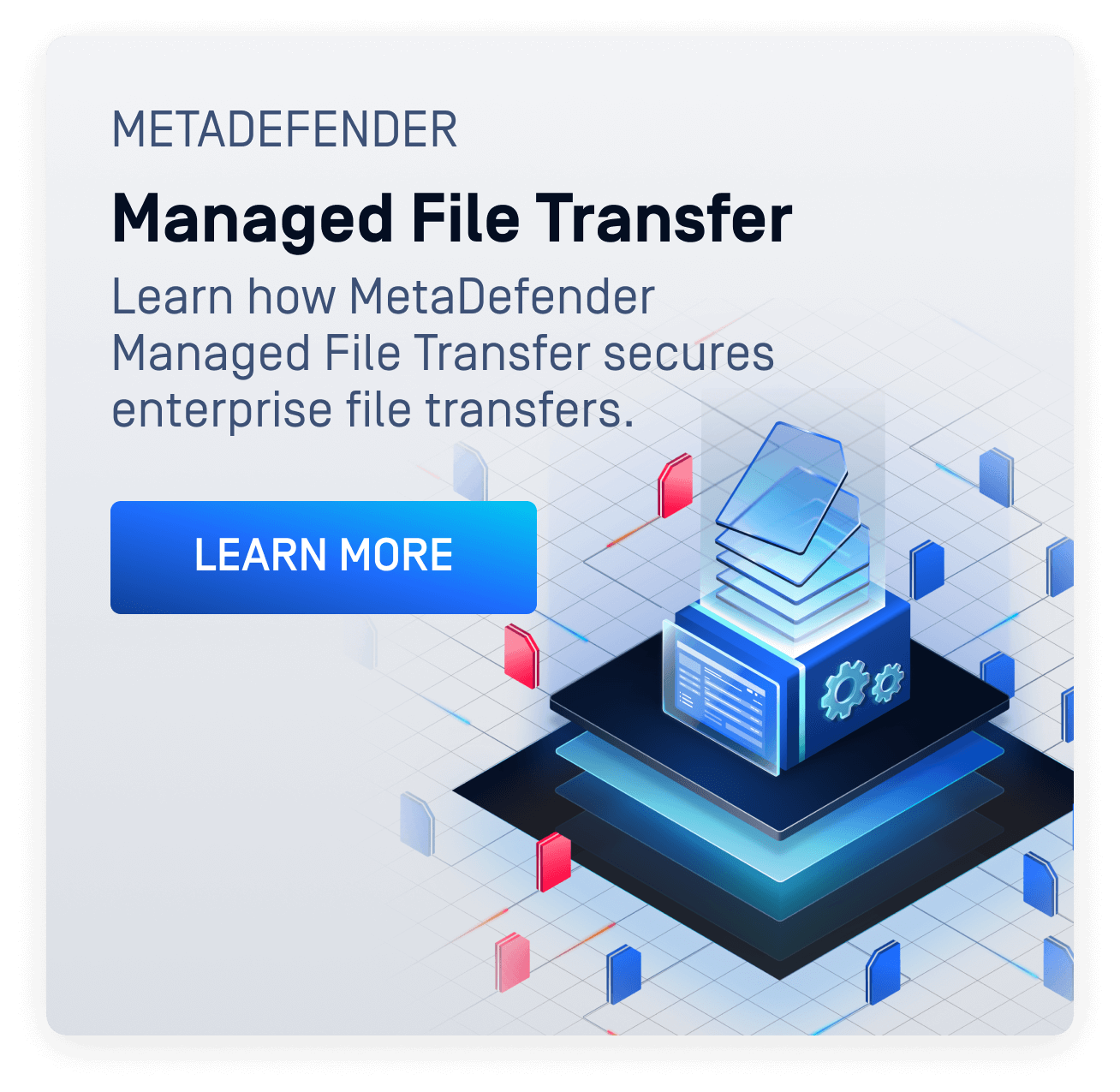The “ToolShell” vulnerability (CVE-2025-53770) affecting Microsoft Office SharePoint Server products has become a significant headline in the cybersecurity world. For CISOs and IT security leaders, this is more than just another patch cycle. It illustrates a deeper paradox: SharePoint is a world-class collaboration platform, yet it is widely and inappropriately used as a general-purpose file transfer solution.
This misuse is creating systemic risk. Even with encryption at rest and traditional defenses, attackers can now weaponize SharePoint servers themselves to bypass protections, steal data, and gain persistent access. Recent exploits show that the risks extend far beyond a single bug; they expose the inherent security gaps of treating collaboration tools as secure file transfer infrastructure.
This blog unpacks the latest SharePoint vulnerabilities, explains why collaboration platforms fail as secure file transfer solutions, compares their risk profiles to purpose-built platforms, and provides best practices for separating collaboration from file transfer.
Understanding Recent SharePoint Security Vulnerabilities
What is CVE-2025-53770 (ToolShell) and Why Does It Matter?
The ToolShell RCE (remote code execution) vulnerability (CVE-2025-53770) affects on-premises Microsoft SharePoint servers. It demonstrates that a single RCE flaw can render traditional defenses, like data-at-rest encryption, insufficient. Attackers don’t need to crack encryption; they can use the server’s own processes to decrypt and exfiltrate sensitive files.
How Do Recent SharePoint Vulnerabilities Enable Remote Code Execution and Data Breaches?
The attack chain exploits authentication and XML deserialization flaws, allowing unauthenticated access, web shell deployment, cryptographic key theft, and malicious ViewState forgery. Once exploited, attackers achieve full RCE and use SharePoint’s trusted processes (like w3wp.exe) to exfiltrate data.
Are On-Premises or Cloud SharePoint Deployments More at Risk?
ToolShell specifically impacts on-premises deployments, which critical infrastructure organizations depend on almost exclusively. Both cloud and server instances also face risk if used as file transfer hubs. Any platform acting as a central repository for critical data flows becomes a high-value supply chain target.
What is the Severity and Business Impact of Unpatched SharePoint CVEs?
The U.S. NVD rated CVE-2025-53770 with a critical 9.8 score. More than 9,000 servers are at risk worldwide, with confirmed compromises across finance, healthcare, energy, telecom, and government. The broader issue: SharePoint is being misused for external-to-internal file sharing, a function it was never designed to secure.
Why Collaboration Tools Like SharePoint Fail as Secure File Transfer Solutions

What Security Gaps Exist When Using SharePoint for File Exchange?
While SharePoint excels at collaboration and document co-authoring, it lacks file-level threat analysis, granular transfer policies, and compliance-ready audit trails. Malicious files can slip in unnoticed, spreading laterally through the enterprise.
How Do Attackers Exploit Collaboration Platforms for Data Exfiltration?
Convenience drives misuse: employees use SharePoint as a drop point between external partners, internal teams, and critical systems. But this behavior amplifies risk. Sophisticated threats often hide in common file types like PDFs or Word docs, bypassing native controls.
Operational and Compliance Risks of Repurposing Collaboration Tools
Using SharePoint as a pseudo-MFT increases compliance gaps. Industries subject to HIPAA, PCI DSS, or GDPR requirements face heightened liability when file exchanges lack policy enforcement, traceability, or proper sanitization.
Collaboration Tools vs. Purpose-Built Secure File Transfer: A Comparative Analysis
What Makes MetaDefender Managed File Transfer™ Uniquely Effective?
MetaDefender Managed File Transfer integrates advanced, industry-leading OPSWAT technologies such as Metascan™ Multiscanning, Deep CDR™, File-Based Vulnerability Assessment, Adaptive Sandbox, and Proactive DLP™. Every file is sanitized and analyzed before transfer, which goes beyond the scope of SharePoint functionality.
Why Multi-Layered Threat Prevention Is Critical for Regulated Industries
Finance, healthcare, manufacturing, and critical infrastructure demand advanced protections. A zero-trust approach to file content—not just transport—is essential to defend cross-domain flows.
Best Practices for Secure Enterprise File Transfers
- Separate collaboration and transfer. SharePoint = collaboration. MetaDefender Managed File Transfer = secure file transfer.
- Remediate vulnerabilities immediately. Patch CVE-2025-53770 and reevaluate the role of collaboration tools.
- Monitor for exploitation. Pay attention to external → internal → critical file flows.
- Adopt multi-layered defenses. Use CDR and multiscanning to sanitize files before delivery.
The Business Value of Proactive File Transfer Security
CISOs are often forced to justify security investments in terms of measurable business outcomes. When it comes to file transfer, the ROI of moving from collaboration-tool misuse to a purpose-built secure transfer solution is clear: risk reduction, compliance assurance, and operational resilience.
How Does Proactive Threat Neutralization Reduce Breach Risk and Cost?
Breaches linked to file-based exploits can cost millions in response, downtime, and lost reputation. Proactive threat neutralization, through technologies like Deep CDR and Metascan Multiscanning, removes malicious content before it enters the network. This dramatically reduces the probability of a breach and, by extension, the average cost of incident response.
- Risk Avoidance: A single ransomware incident avoided can justify the cost of a secure file transfer solution many times over.
- Operational Continuity: Proactive defenses prevent downtime that disrupts manufacturing lines, financial transactions, or healthcare operations.
What Compliance and Regulatory Benefits Do Purpose-Built Solutions Deliver?
Regulated industries face not just financial loss, but steep penalties and reputational fallout if sensitive data is mishandled. MetaDefender Managed File Transfer enforces policy-driven controls, encryption, and auditable workflows, ensuring enterprises remain compliant with frameworks such as HIPAA, GDPR, SOX, and PCI DSS.
- Audit Readiness: Automated logs and reporting provide clear evidence for regulators.
- Data Sovereignty: Granular policy enforcement helps enterprises meet jurisdictional data handling mandates.
Real-World Outcomes: Case Studies from Critical Infrastructure and Regulated Sectors
Organizations in finance, healthcare, energy, and manufacturing are increasingly adopting secure MFT platforms to protect critical data flows. Key outcomes include:
Financia Services
Secure partner file transfers reduce the risk of insider trading investigations and regulatory fines.
Healthcare
Proactive sanitization of patient records and lab data aids HIPAA compliance while protecting patient safety.
Manufacturing & Energy
File transfers between IT and OT environments are hardened against supply chain attacks that could halt production or impact national infrastructure.
Executive-Level Value: From Reactive Defense to Strategic Differentiator
When file transfer security shifts from a reactive patchwork to a proactive, file-centric defense model, enterprises build trust in addition to increased protection. Executives can confidently demonstrate to boards, customers, and regulators that they are not just meeting minimum compliance standards but adopting a security-first architecture that reduces systemic risk.
FAQ
Q: How often are new SharePoint vulnerabilities discovered?
Multiple critical CVEs emerge annually, with attackers exploiting them quickly post-disclosure.
Q: Can SharePoint be safely used for file transfer with third-party add-ons?
Layers help, but the platform remains unsuited for high-security file transfers.
Q: What are the warning signs of exploitation?
Unexpected .aspx files, abnormal logins, or unusual outbound traffic.
Q: How do file transfer needs differ in regulated industries?
They require audit trails, policy enforcement, and proactive threat prevention.
Final Thoughts
The “ToolShell” vulnerability exposes a fundamental misuse of SharePoint specifically and collaboration tools in general. These tools are not secure file transfer platforms, and treating them as such creates systemic risk.
Enterprises must strategically separate collaboration from file transfer and adopt purpose-built solutions like OPSWAT's leading MFT solution, MetaDefender Managed File Transfer, ensuring that every file is analyzed, sanitized, and compliant before crossing organizational boundaries.



